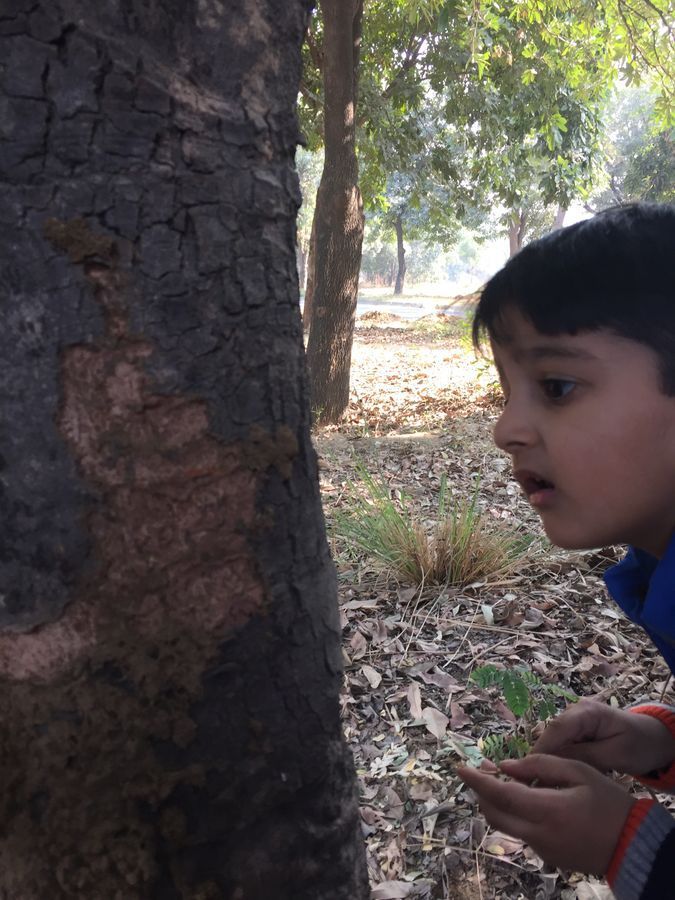Foldscope tutorial by a 5 year old
 Dec 22, 2015 • 3:13 PM UTC
Dec 22, 2015 • 3:13 PM UTC Unknown Location
Unknown Location 140x Magnification
140x Magnification Microorganisms
Microorganisms
Manu Prakash
I am a faculty at Stanford and run the Prakash Lab at Department of Bioengineering at Stanford University. Foldscope community is at the heart of our Frugal Science movement - and I can not tell you how proud I am of this community and grassroots movement. Find our work here: http://prakashlab.stanford.edu
266posts
1192comments
42locations

I just returned after running Foldscope workshops in India; both in Delhi and North East. On my flight back; I was contemplating all the experiences and feedback and my expectations from the participants. In the end, what matters is what these participants do with the resources and tools that were shared. An initiative like this will only work on the largest scale where participants take it in own hands, learn and practice and share with others what they explore. Science is mostly hard work; and it’s hard for me to stress how important it is for people to actually engage in the process of explorations by themselves. Imagine training someone how to eat without them ever putting a bite in one’s mouth – you get the point. So, if you participated in any of the workshops or have a Foldscope; this is a time to get going – finish building it, use it and tell everyone what you have seen so far. You will only get better with time.
Now; to motivate you – I am going to share something very personal to me. I spent a few hours with my nephew – who is only 5 year olds. But he soaked up Foldscope and explorations of the microcosmos like a sponge. He is one of the youngest participants I have ever engaged with a detailed Foldscope exploration. What I was delighted with was his deep passion for this process and his inquisitive nature (we are all born curious). Here is a video I put together where he explains how to use his Foldscope. He not only learned how to use it; he actually put the words to practice – found things in the back yard or campus; walked around with me looking for “funny little things” and collected lots of samples with me. We even use a trick of refrigeration to mildly knock insects out so we could mount them nicely in our Foldscope. Now, he walks around with his microscope, and I wonder what he will explore on his own.
Here is a video of our experience – with a short one minute tutorial on “How to use a Foldscope”
Now; to motivate you – I am going to share something very personal to me. I spent a few hours with my nephew – who is only 5 year olds. But he soaked up Foldscope and explorations of the microcosmos like a sponge. He is one of the youngest participants I have ever engaged with a detailed Foldscope exploration. What I was delighted with was his deep passion for this process and his inquisitive nature (we are all born curious). Here is a video I put together where he explains how to use his Foldscope. He not only learned how to use it; he actually put the words to practice – found things in the back yard or campus; walked around with me looking for “funny little things” and collected lots of samples with me. We even use a trick of refrigeration to mildly knock insects out so we could mount them nicely in our Foldscope. Now, he walks around with his microscope, and I wonder what he will explore on his own.
Here is a video of our experience – with a short one minute tutorial on “How to use a Foldscope”
Here is a quick tricky if you are struggling to mount “live” insects inside a Foldscope. Keep them in a ziplock bag and leave the bag in your refrigerator for 30 seconds. Now this time depends on species you are working with; but this way you will be able to put the insect to “sleep” without harming the subject. It will wake up within 10-20 seconds after you take it out. Give it a try, and play with this time duration to see if this works for you. Our young participant really enjoyed this process.
I will write a closed captions for this video – so I can translate the Hindi language in the same. But since we just finished a workshop in India, Hindi is probably appropriate for this video.
Keep exploring..
cheers
manu
I will write a closed captions for this video – so I can translate the Hindi language in the same. But since we just finished a workshop in India, Hindi is probably appropriate for this video.
Keep exploring..
cheers
manu
Sign in to commentNobody has commented yet... Share your thoughts with the author and start the discussion!

 0 Applause
0 Applause 0 Comments
0 Comments
















